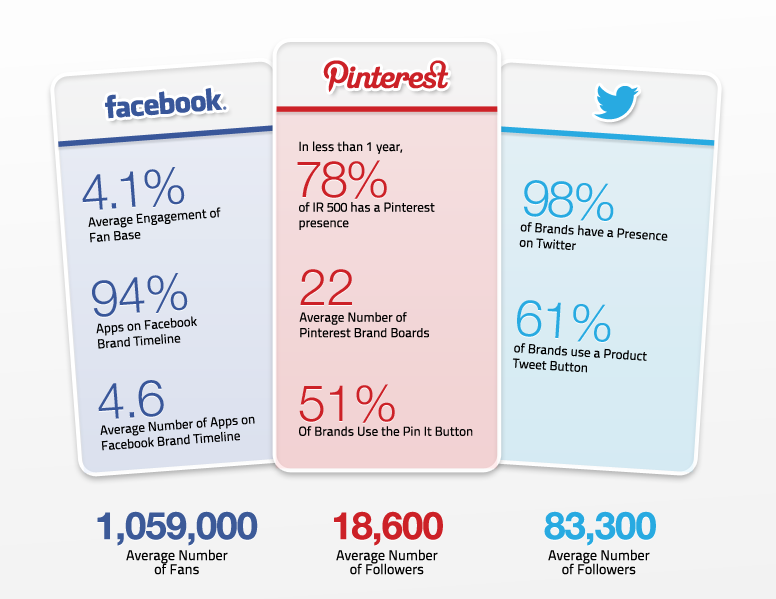By adaptive - April 30th, 2013
Post IPO Facebook now has to confront the cold light of commerce as it tries to moneties its vast user base
The arrival of Facebook’s F-commerce platform two years ago caused a virtual earthquake as the thunder of retail feet galloped towards the platform to set up their stores.
However, Facebook hasn’t proven to be the land of retail opportunity. Store-after-store shut its doors and limped off to find alternatives. J.C. Penney and Nordstrom left within the year, and others followed suit, including the initially successful, and certainly ground breaking, solution Payvment that sold up to their competitors in February 2013.
In 2011 Forrester Research analyst Sucharita Mulpuru predicted that Facebook would not become a major e-commerce player. Their study found that email and paid search were more effective at customer acquisition and retention than a social network presence. Mulpuru told the Wall Street Journal: “You go to Facebook to find other people, not to find a product.”
F-commerce is developing if very slowing in most sectors, but with pretenders to its throne such as Pinterest, Facebook will have to evolve its e-commerce platform quickly to stay ahead.

[Source: http://www.8thbridge.com/wp-content/uploads/2012/12/2012-SCIQ-Infographic.png]
It seems she was right. Selling to people on Facebook has been likened to selling to people when they are hanging out at a bar: A bit sleazy and not entirely welcome. Users don’t go to Facebook to do a spot of shopping, they go to see what insanity Great Aunt Matilda has got up to this week. However, there are some success stories and perhaps Facebook isn’t so much an e-commerce failure, but a solution one step out of time.
Crossing timezones
Says Sifra Soer, a writer, editor and producer working with Amsterdam University of Applied Sciences “Facebook has to keep developing to stay ahead of other social networks. They have to make money off this huge community and any development is progress and a way forward for Facebook, or any social network.”
Sifar Soer is a writer, editor and producer working with Amsterdam University of Applied Sciences.

Soer raises an interesting point: “Online has a short attention span, everything goes in cycles. Think back to how big Farmville was on Facebook and it died a silent death in the end – something that seemed unreal at its peak when people would set their alarm in the middle of the night to water their virtual crops.”
The same can be applied to the so-called failure of F-commerce. It may not have succeeded as expected back in 2011, but that doesn’t mean it won’t hit the big leagues in the future.
Take a look at Soldsie an F-commerce startup that launched a social media point of sale product in September 2012. Their solution is simple: A business sells a product on Facebook; user buys that product by registering with Soldsie and writing ‘Sold’ in the comments. Simple and effective, and the company reached a million dollars in transactions across this solution by March 2013.
“F-commerce has the potential to take off in the future,” says Jon Norris, editor at Crunch, “With a user base of over one billion, just about anything is possible on Facebook. They have the biggest sandbox in the world. The latest changes to Facebook can only improve the experience. The broadening of Open Graph actions is good news for sellers. When an individual Likes a page, their friends often see the option to also Like it in their timeline – how long before we see transactions shared on Timelines with a Buy button replacing the Like?”
Jon Norris is the Editor at Crunch.

Zygna, according to a piece in The Guardian generated about 80% of its revenue on Facebook. Of course that was before they started to ease off on their dependency on the giant social network. And remember Payvment mentioned earlier? Their competitor, Ecwid, said that their total dollar sales in Facebook stores grew by 267% in the last quarter of 2012.
The other point worth mentioning here is that way back in the beginning of the internet, when it was first taking off and everyone had to have a dot com, the internet was initially seen as the next big thing in grabbing cash from consumers. The crash in 2000 saw many predicting that the Internet was never going to make anyone any money. That online commerce was a dream.
Can you say, what about Amazon?
Facebook may not be delivering piles of cash to every businesses venturing into their F-commerce solutions, but it will only take that one innovation to change the way users interact with the social media platform. Trust, ease of use, lack of intrusiveness, and mobility – these are issues that Facebook needs to address.
“Facebook has touted their frictionless sharing in the past, to make F-commerce viable they need to introduce frictionless buying,” says Norris, “This is a lesson Amazon have already learned with their Buy With 1-Click button, a similar implementation on Facebook could be incredibly powerful.”
A mobile movement
Another aspect to F-commerce is, of course, the growing focus on M-commerce, as smart phones become an increasingly dominant force in the market.
“Mobile commerce is still, to a certain extent, an unknown quantity,” adds Norris, “PayPal say mobile payments are still only 10% of their transactions, but mobile browsing accounts for as much as 20% of web traffic. This shows a certain reluctance to buy on mobile.”
According to Mobile Metrix 2.0 by comScore, the average amount of time users spent on the Facebook app was an astonishing 441 minutes and was the only app in the top five rankings, beating Angry Birds and Zynga. And Facebook itself is not ignoring the potential of M-commerce.
Towards the end of 2012 Facebook unleashed mobile app install ads and advertisers really, really like them. According to Business Insider, many of Facebook’s larger clients who used these ads have “indicated that the ads can be used to develop e-commerce on Facebook, turning the social network into a mobile shopping and sales device.”
Facebook’s initial beta testers also reported impressive results while using this resource, and while it is still taking those baby steps, this looks positive for both F and M commerce.
“Facebook is working towards being more and more commercial,” says Soer. “As more and more people go online primarily through their mobile devices it is key that M-commerce is a threshold in the developments that F-commerce will go through.”
Norris adds, “18% of total smart phone usage is spent on Facebook, which is more than in the browser. The way I see it, one will have to act as the canary in the coalmine. If a major mobile commerce drive is launched by, for instance, Amazon, and fails, it could have a devastating impact on Facebook commerce unless Facebook can prove that they provide higher engagement and conversion rates.”
In conclusion
In the course of this series Facebook has been taken apart and analysed across its return on investment, value as a marketing tool and, now, whether or not it can deliver on the F-commerce promise. What has emerged as a common thread throughout the features is that Facebook is still mapping a path and searching for the key to consumer engagement without being that weird pushy guy in the pub.
“I think that Facebook needs built-in transaction processing,” says Norris, “Sina Weibo (the Chinese version of Facebook) has payment processing as part of their service and Mercedes sells cars through their account. Can you imagine anyone buying a car off Facebook in the West?” Read more about how China is approaching its social media revolution.
Facebook appears to be getting it right with their latest mobile apps and are clearly working hard to prove themselves and as brands ask what their next Facebook channel is going to be, it’s worth being clever with spend while also taking some risks. They could pay off in the best possible way.
Next Reads
October 2013, New York
How you can leverage social media for a more effective customer service function and better customer insight
Brochure Programme